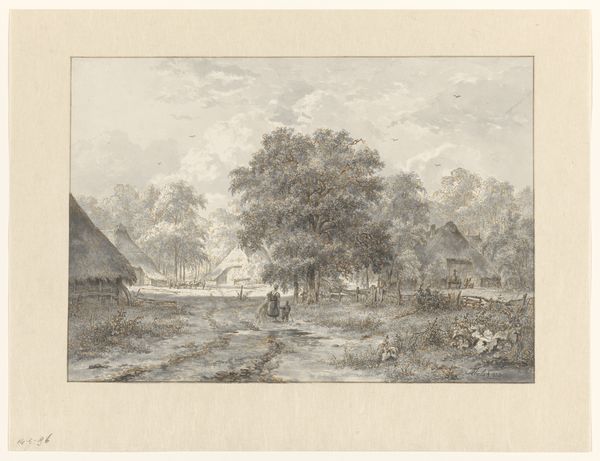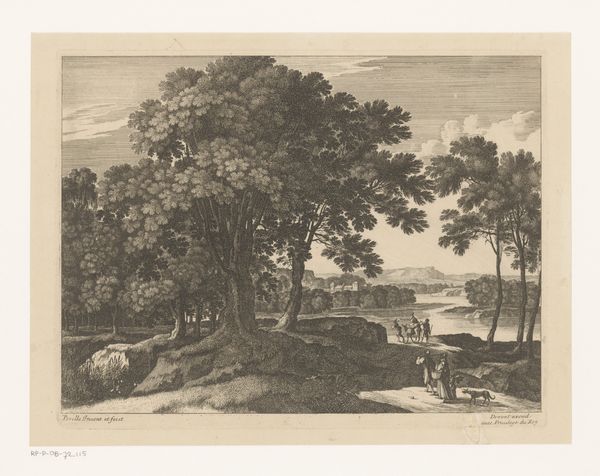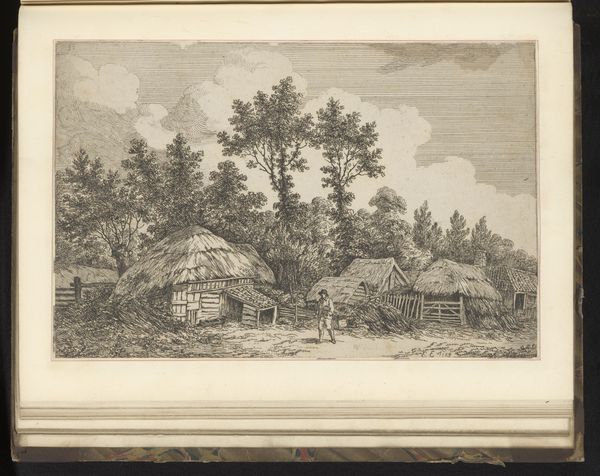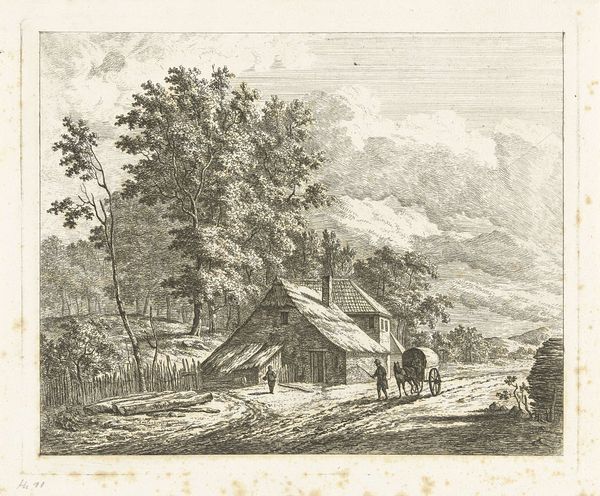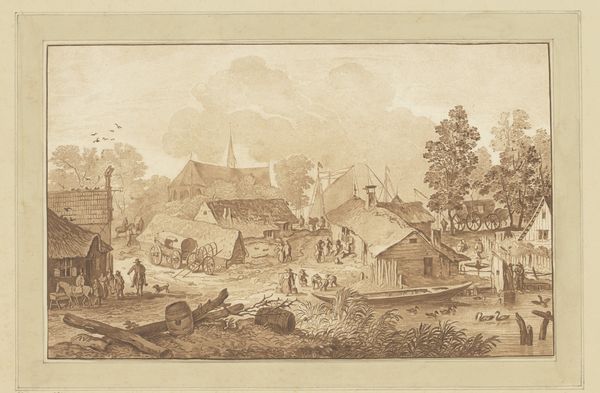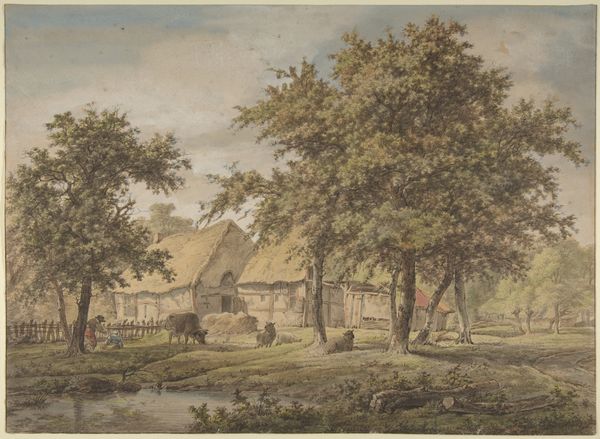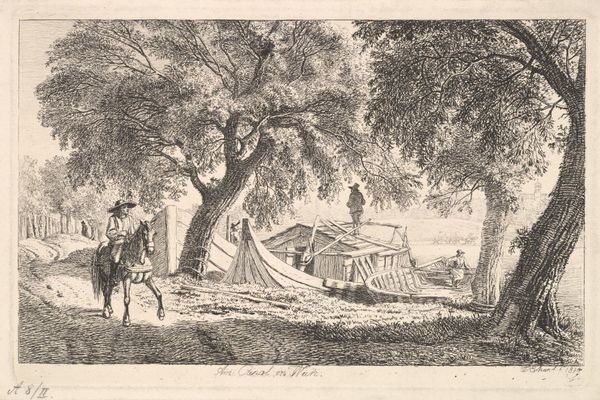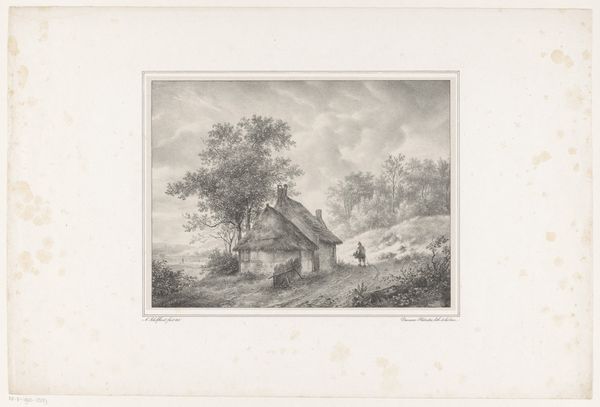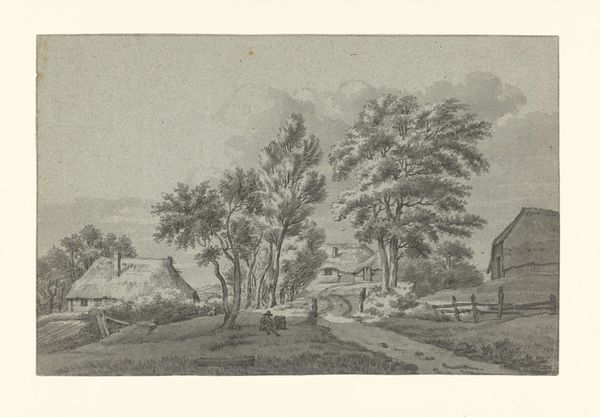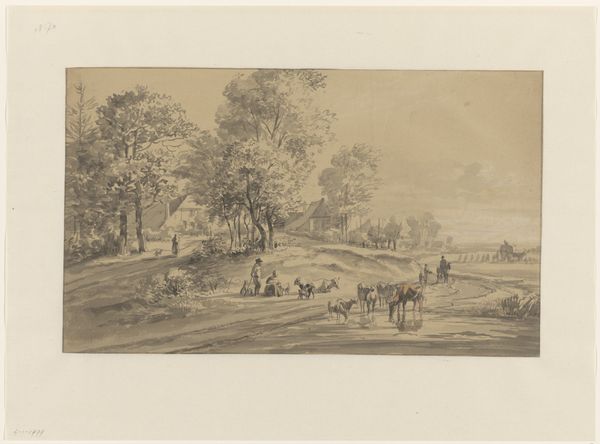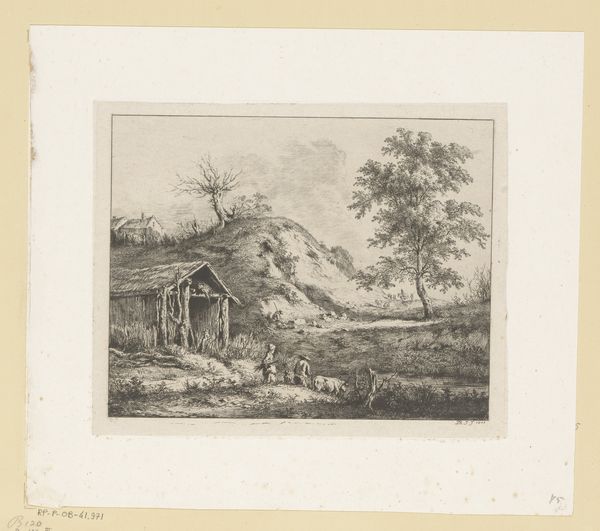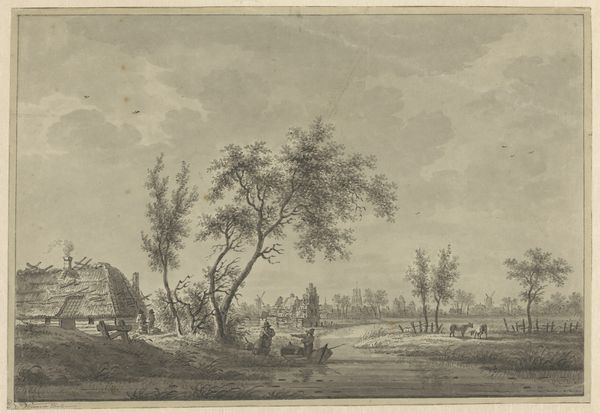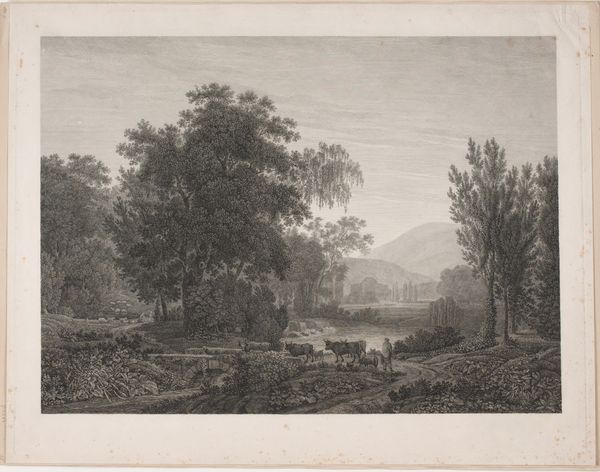
aquatint, print
#
aquatint
# print
#
landscape
#
romanticism
#
genre-painting
Dimensions: 221 mm (height) x 286 mm (width) (plademaal)
Curator: This is "Landscape with a Rider" by Søren Henrik Petersen, created sometime between 1823 and 1827. It’s an aquatint print and a striking example of Danish Romanticism held in the collection of the SMK, the National Gallery of Denmark. Editor: My first impression is the stillness. There's an immense sense of peace captured through these subtle gradations of tone, that almost monochrome palette is surprisingly calming. Curator: Absolutely. The Romantic period saw a resurgence in landscape painting, as artists began focusing more intently on nature and national identity. Prints like this, through their relative accessibility, played a vital role in disseminating these nationalistic ideas. Editor: The medium itself—aquatint—is key to that accessibility. This tonal effect comes from a pretty ingenious process. The copper plate is etched to create a granular surface, which when inked, allows for the subtle tonal gradations you mention, quite unlike the sharper lines of, say, an engraving. This made the reproduction and wider dissemination of landscape imagery so much easier. Curator: And landscape prints helped normalize a visual language and a romantic sensibility aligned with nascent nationalist feelings and the experience of land ownership in the 19th century. Prints helped bring landscape to a new class of consumers. Editor: Note too the materiality of it all, a handmade aesthetic, accessible in price yet reliant on skill, tools, labor, craft, the entire material context feeds directly into the subject matter. How interesting that the medium helps to validate Romanticism's focus on the spiritual dimensions of the natural world. Curator: Indeed. One has to also consider how Danish national identity in that period was formed through institutions and a kind of collective looking, even though printmaking at this time struggled due to economic realities, this one image gives insight to Romantic-era aesthetics. Editor: So, it’s an object imbued with social significance due to how its means of production intersect perfectly with the cultural zeitgeist of the era. Curator: Precisely. Seeing it displayed at SMK also reinforces its continued importance within Danish cultural heritage. Editor: What I find most compelling is that tension between accessibility and artistry, a testament to the ways in which prints made art accessible and helped shape cultural values.
Comments
No comments
Be the first to comment and join the conversation on the ultimate creative platform.
